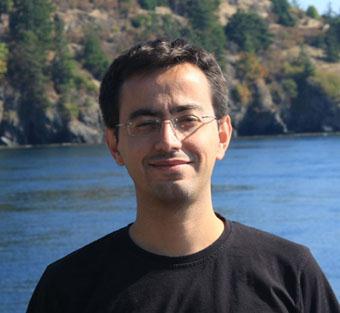CS Faculty Member Contributes to Human Genome Research
 Asst. Prof. Can Alkan of the Department of Computer Engineering has contributed to two recently published high-profile research studies on sequencing of the human genome. One of the investigations involves analysis of the DNA of an archaic human group and its comparison with that of modern groups, while the other looks at genetic variation among different human populations in several regions of the globe as part of the international 1000 Genomes Project.
Asst. Prof. Can Alkan of the Department of Computer Engineering has contributed to two recently published high-profile research studies on sequencing of the human genome. One of the investigations involves analysis of the DNA of an archaic human group and its comparison with that of modern groups, while the other looks at genetic variation among different human populations in several regions of the globe as part of the international 1000 Genomes Project.
The first study, published in Science [1] and led by Svante Paabo in Germany, describes the complete sequence of the Denisovan genome, shedding light on the relationships between these archaic humans, who were closely related to Neandertals, and modern humans. Previous studies of DNA from fossils excavated at Denisova Cave in the Altai Mountains of southern Siberia and dated as 30,000 to 50,000 years old characterized the Denisovans as an ancient human species.
The investigation described in the new publication improved the technique to extract DNA from fossilized bones, which allowed the researchers to obtain 15 times more data than before. Comparing the Denisovan genome with those of several modern humans from around the world, the researchers found that they share more genes with populations from the islands of southeastern Asia, including Melanesians and Australian Aborigines, than with populations elsewhere in Asia. Analysis of the Denisovan genome further illuminates the relationships of Neandertals with individuals from East Asia, South America and Europe.
The other study, published in Nature [2], details the analysis of the genomes of 1,092 individual human samples from 14 different populations from Europe, Africa, East Asia and the Americas. This study is the second major paper generated by the 1000 Genomes Project (www.1000genomes.org), which aims to catalogue normal (i.e., non-disease causing) genetic variation in humans. The report captures up to 98% of the sequences of rare gene variants that occur in at least 1% of the population.
The findings in the report indicate that there is substantial geographic variation in the occurrence of these rare variants. Profiles of rare and common variants vary with different populations. The next phase of the project will include as many as 2,500 individuals.
[1] A High-Coverage Genome Sequence from an Archaic Denisovan Individual. Science, 338 (6014): 222-226, 2012.
[2] An integrated map of genetic variation from 1,092 human genomes. Nature, Nov. 1; 491 (7422): 56-65, 2012.